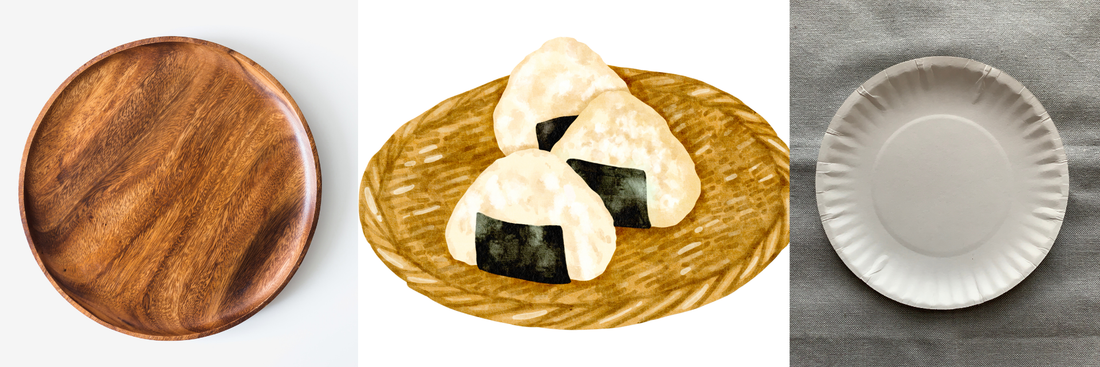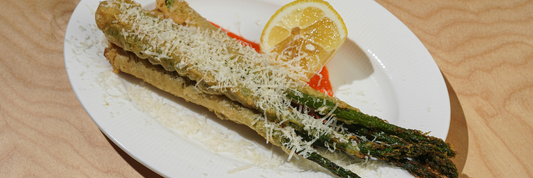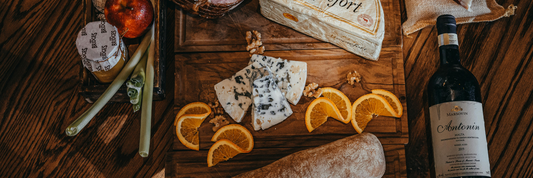Running a sushi business means paying attention to every detail not just the taste and presentation, but also how your food travels and reaches customers. Packaging is not just a container; it’s an extension of your brand and your sustainability values.
In fact, according to McKinsey, 67% of global consumers consider sustainable packaging an important factor in their purchasing decisions. As eco-conscious dining continues to rise, sushi brands across Canada and North America are rethinking packaging shifting from plastic toward wood, bamboo, and paper alternatives.
At KimEcopak, we help sushi brands choose materials that balance performance, cost, and environmental impact turning packaging into a tool for brand storytelling and responsible business growth.
-
Forecast 2026: Emerging Ingredient Trends in Sushi & Ramen
-
Solutions to Reduce Food Waste in Ramen & Sushi Restaurants
- The Difference Between Ramen Dine-In and Ramen Delivery Business Models
Why Packaging Matters for Sushi Take-Out

The Unique Nature of Sushi Packaging
Sushi is a delicate food. Its packaging needs to:
- Maintain freshness and moisture balance not too dry, not soggy.
- Resist leakage from soy sauce or fish oils.
- Provide durability and stackability for transport.
- Create a beautiful, premium unboxing experience worthy of the dish.
Consumer Trends and Environmental Regulations
- Single-use plastic bans are expanding across Canada and the U.S.
- Consumers now expect compostable or recyclable options from restaurants.
- Green packaging helps build a clean, trustworthy brand image that aligns with modern eco-conscious dining.
Overview of Each Material

Wooden Packaging
- Made from lightweight softwood like poplar or eucalyptus, often formed from thin veneers.
- Requires a food-safe coating to resist moisture and enhance durability.
- Naturally compostable within months under proper conditions.
- Gives a premium, rustic aesthetic perfect for high-end sushi.
Bamboo Packaging
- Technically a fast-growing grass, bamboo regenerates without replanting.
- Fibers are dense and resilient, giving better moisture resistance than regular paper.
- Often made from pressed bamboo pulp or bamboo-paper blends.
- Fully biodegradable and compostable, with a natural “green” perception.
Paper Packaging (Including Kraft Paper)
- Kraft paper is strong, unbleached, and easily recyclable.
- Can include coatings (PLA, PE, or bio-coatings) for oil and moisture resistance.
- While affordable, paper tends to weaken under moisture or heavy loads.
- Ideal for light sushi rolls or large-volume orders.
Detailed Comparison: Wooden vs. Bamboo vs. Paper
| Criteria | Wood | Bamboo | Paper / Kraft (Coated) |
|---|---|---|---|
| Moisture & Oil Resistance | Moderate (needs coating) | Strong natural resistance | Needs coating to resist leaks |
| Durability & Stacking | Excellent | Good | Fair |
| Compostability / Recyclability | Fully compostable | Fully compostable | Recyclable if uncoated |
| Cost & Logistics | Higher (heavier, premium) | Medium | Low (lightweight) |
| Aesthetic Appeal | Elegant, high-end | Modern, eco-premium | Minimalist, casual |
| Environmental Footprint | Sustainable (slow growth) | Highly renewable | Sustainable, recyclable |
Insight:
- Wood offers luxury but higher costs.
- Bamboo strikes a balance between eco-performance and cost.
- Paper is the most economical and scalable option but needs functional coating for sushi.
Which Material Fits Which Scenario?

Premium Sushi or Sashimi Platters
- Wooden or bamboo trays enhance brand prestige and natural presentation.
- Ideal for dine-in take-out or high-end omakase sets.
- Combine with paper sleeves or labels for branding.
Quick Take-Out and Long-Distance Delivery
- Bamboo packaging works best durable, moisture-resistant, and eco-friendly.
- Suitable for delivery apps or long transit times.
High-Volume, Cost-Efficient Options
- Kraft paper containers are the go-to for affordability and light weight.
- Great for sushi rolls or lunch combos where quick turnover matters.
How KimEcopak Supports Sushi Restaurants

Custom Design & Branding Solutions
KimEcopak offers custom printing, embossing, and logo placement on wooden, bamboo, or paper packaging allowing your eco values to shine through your design.
Material Combination Strategies
- Mix and match: paper lids + wooden bases, or bamboo liners inside kraft boxes.
- Create multi-material solutions that balance aesthetics, function, and sustainability.
Quality Testing & Usage Guidelines
- Every KimEcopak product undergoes leak and heat-resistance testing.
- We provide staff usage guidelines to prevent moisture damage and ensure optimal performance during delivery.
Conclusion and Practical Takeaways
There’s no one-size-fits-all solution. The best packaging depends on your brand positioning, logistics, and budget:
- Choose wood for premium dining experiences and aesthetics.
- Choose bamboo for eco-friendly, durable, and mid-cost versatility.
- Choose paper for affordable, large-scale take-out operations.
FAQ (Based on People Also Ask)
1. Which packaging type is most eco-friendly: wood, bamboo, or paper?
Bamboo is generally the most sustainable due to its fast growth and low resource demand. Wood and uncoated paper are also compostable, but paper with coatings may take longer to decompose.
2. Is bamboo packaging better than wood?
Yes, bamboo grows faster, regenerates easily, and has excellent strength and moisture resistance making it ideal for sushi packaging. However, wood offers a more premium aesthetic for luxury dining.
3. Can paper packaging hold moist sushi safely?
Yes, if coated with PLA (bioplastic) or a bio-based waterproof layer. However, this coating may reduce recyclability, so it’s important to choose compostable coatings when possible.
4. Which option is most cost-effective for take-out restaurants?
Paper and kraft packaging are the most affordable, followed by bamboo. Wooden packaging tends to be premium and higher in cost due to manufacturing and shipping weight.
5. Can I mix materials in one packaging design?
Absolutely. Many restaurants use hybrid designs for example, a bamboo base with a paper lid. This combination balances cost, performance, and eco impact.
6. Does KimEcopak provide sushi packaging design services?
Yes. KimEcopak offers end-to-end solutions from material selection, design customization, and sample testing to mass production and sustainability consulting.
-
LEARN MORE about How "Subscribe for a Happy Life" will benefits your business HERE!
-
LEARN MORE about Kim Vu, sharing on the challenges she faced as a former restaurant owner, and how she overcame them to create KimEcopak HERE!




